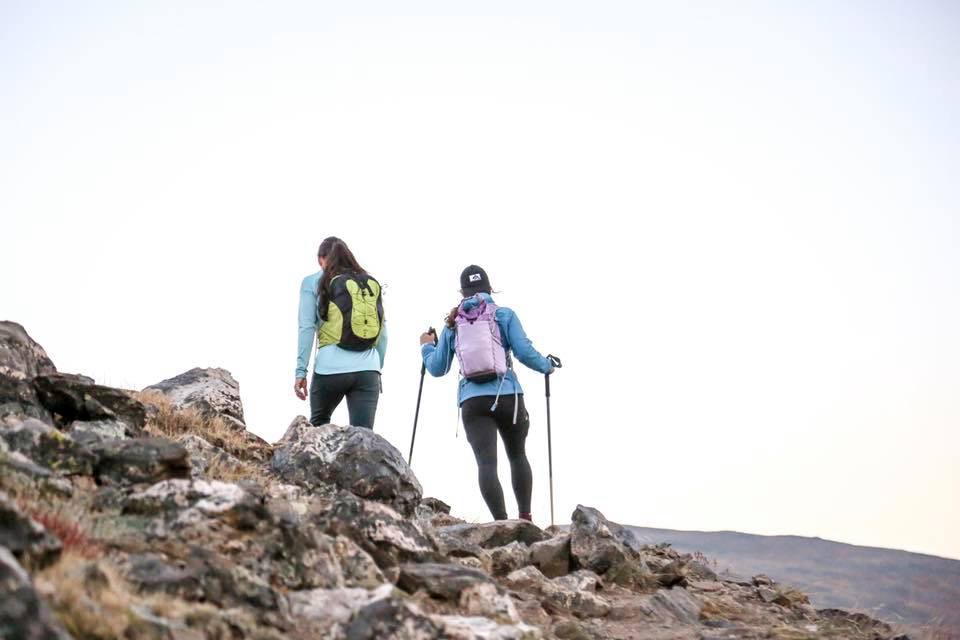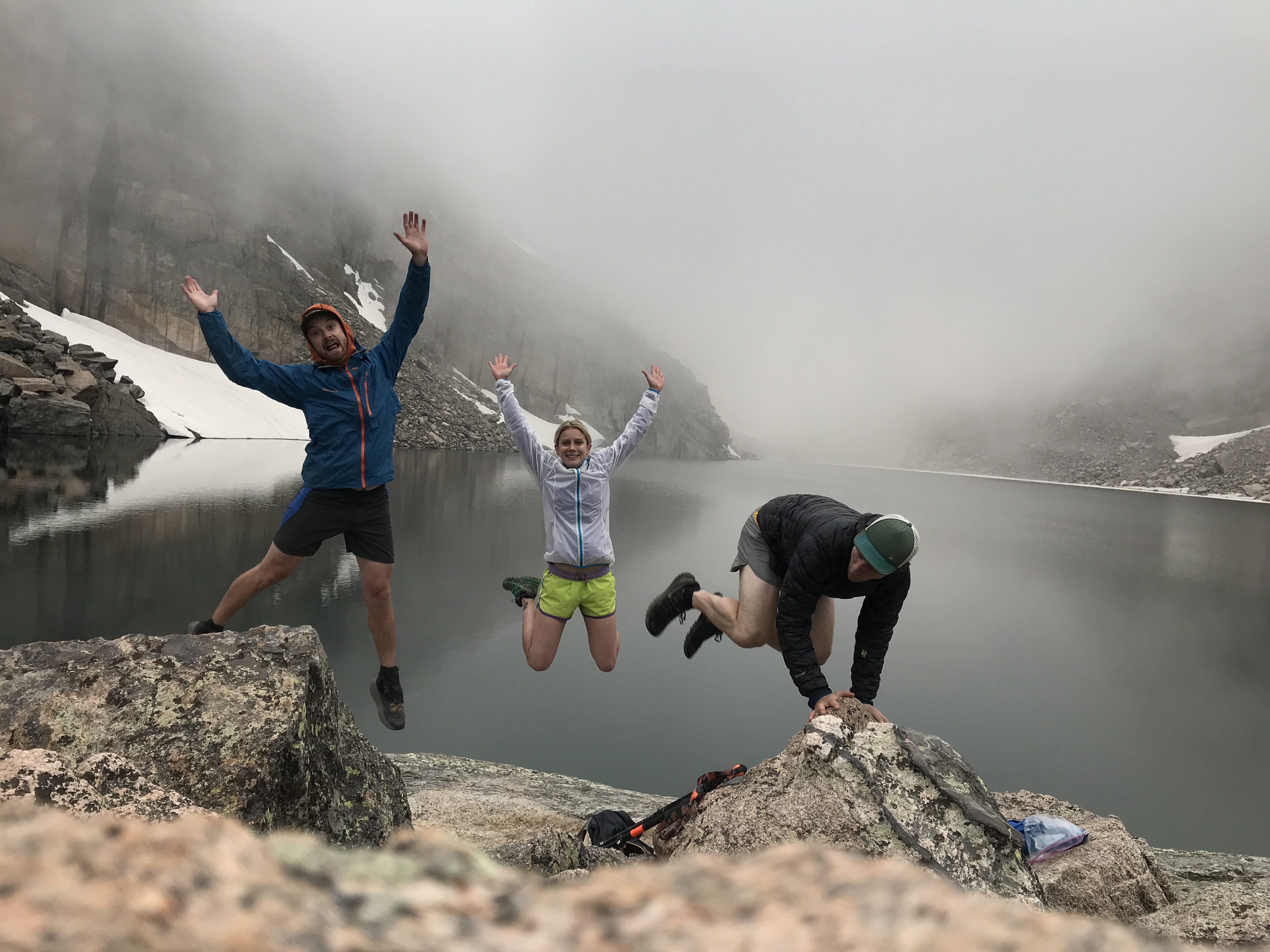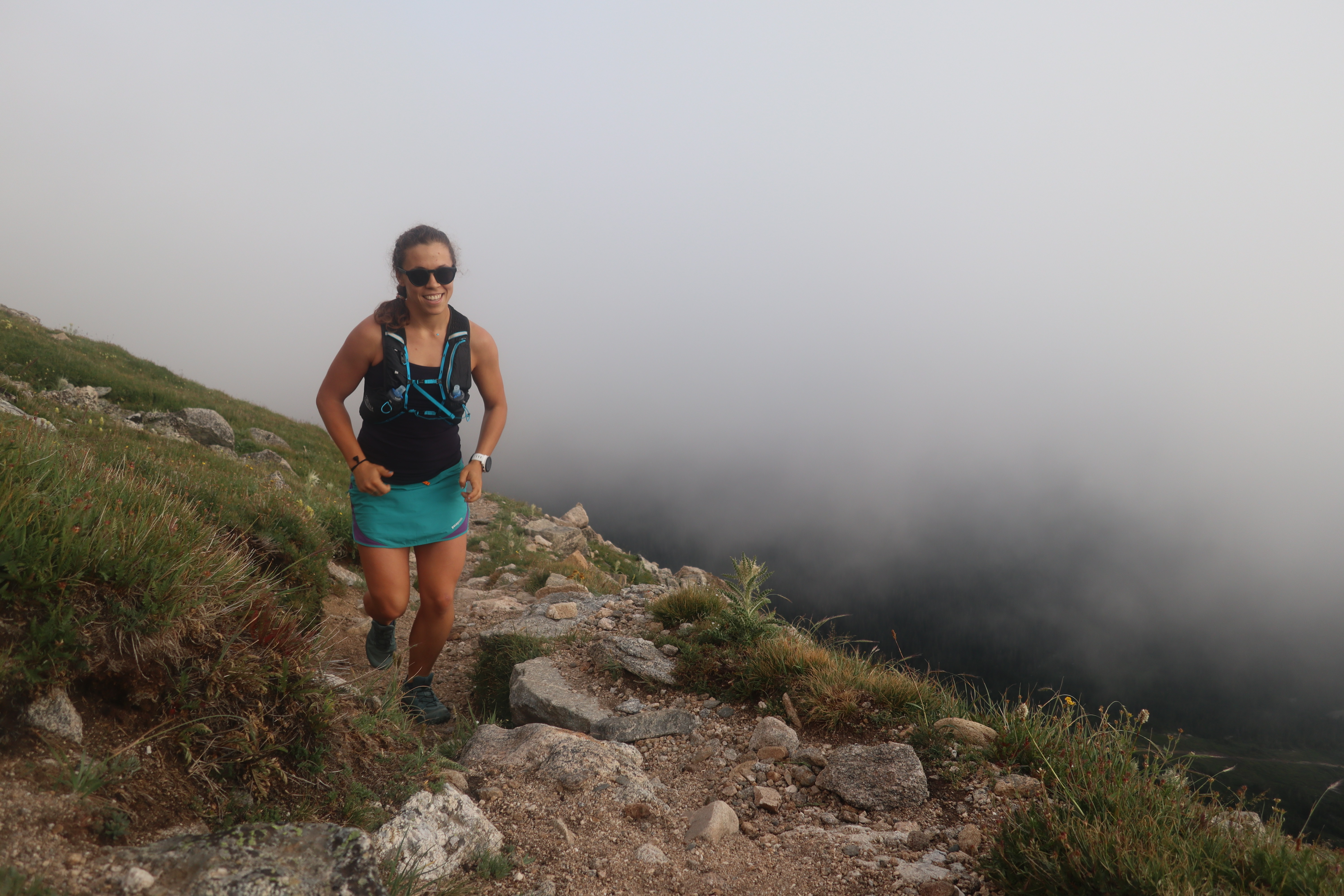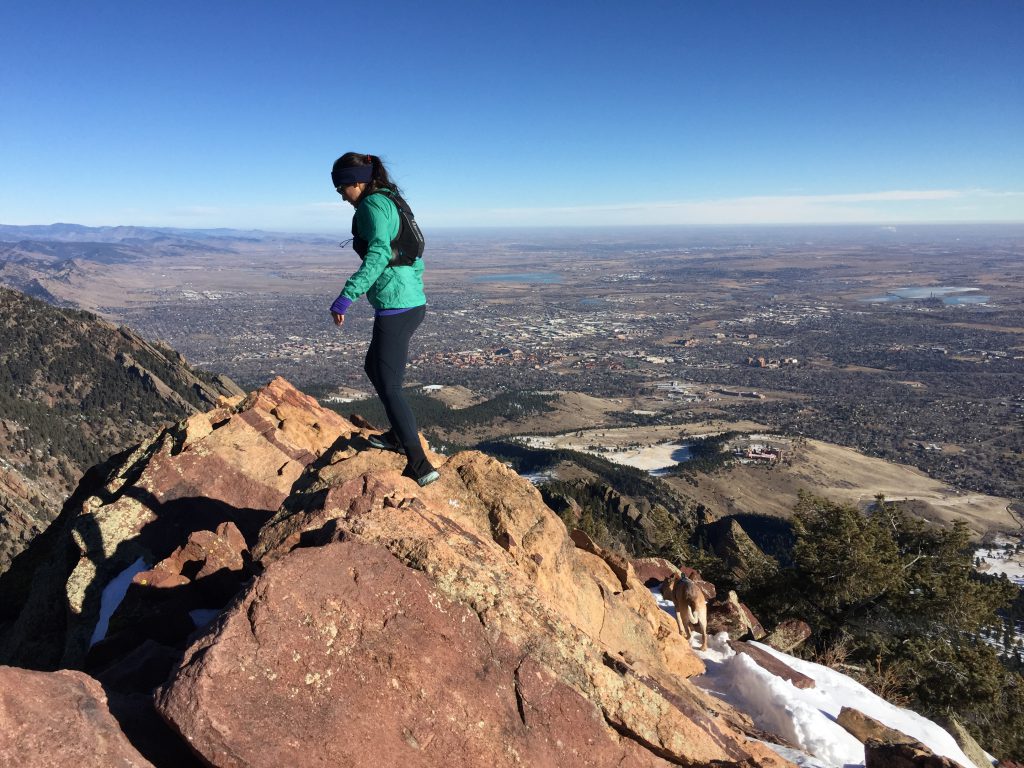Amateurs On The Loose: The Allure of Chasing Fastest Known Times

There’s yet another rise in the ultra, trail running world and it doesn’t involve confetti, banners or a megaphone countdown. There are no lithe professionals sinking into a lunge, shoulders grazing shoulders, at some pop-up start line. In this scenario, it’s just me. The everyday, self-supported and self-propelled me: my own hand at the watch, my headlamp drilling into the dark, no one waving as I peel away from the trailhead. My heels are tight for the first couple of miles until my body sinks into its habituated stride. Knees pop up the inclines and toes lead the descents. My beam of light scatters through the brush and up the conifers. Somewhere, a mule deer is still bedded down. Somewhere, there is an icy reflection of the moon on a lake I may never see.
I’m competing, but I’m alone. Numbers and calculations spiral through my head and it’s easy to chase such abstract curves, especially in the dark and when companionless. So I focus on the sound of my shoes and the weight of air in my chest. For this race, I’ve chosen whether or not I have support at key points. I’ve chosen when and why I run, and I’ve trained as well as anyone determined to reach a goal. No stranger to pain, emotional or otherwise, I’m just like any other competitively-natured trail runner, really. I’m out here to push comfort zones, but importantly, I want to be out here, and all the more, it’s because I’m comfortable with just trying. The experiment of finding one’s parameters is not generally holistic, it’s concretely self-aligning.
For many professionals, transferring onto the Fastest Known Time scene means “forgoing a season of racing” largely due to training demands, since the rigorous nature of a long trail FKT, for example, often requires forgoing sleep. Yet, sponsors are quickly following suit, captured by the spirit and imagination of their athletes. Brands are paying attention and so are we: the population coined easily as social-media-consuming amateurs. People like me don’t typically hold records or have boxes of medals, and we certainly don’t get paid to run. We don’t have coaches, physical therapists, and contracts dictating that we show up and always run fast. Our training is either bold or it’s not. Inspired and earnest, we are no different nor any less imaginative. We try because that is what inspired and earnest people do. Yet, an article implies that we, the easily-entertained screen scrollers, endanger the good name of the sport.

Yes, there are outliers and people who suffer grave consequences in the backcountry as a result of sudden aspirations. But I think the naysayers take for granted what us average, yet avid, outdoorists are like. We uphold the same Leave No Trace ethics and do our due research before every trailhead. We are the consumers of the same literature and gear they get for free. We put in our time, even if it’s only on the weekends or pre-dawn, pre-office-job mornings. We take our adventuring seriously and that means assessing risk seriously, too. Experience is built no matter where you start, and, more than ever, there is infinite access to others’ blunders and advice across the web. Nonetheless, the main point to be made is well known: that the risk of death or injury is ever-present for everyone—in the car, on a bike, running down the street at night. The vast, wild outdoors and the non-discriminative laws of physics will treat the body of a runner tripping over a rock all the same.
In an article published by Trail Runner Magazine, the FKT website co-founder Buzz Burrell justifies the diversion from traditional racing simply: “People can do what moves them … Own what you did. Let everyone else make up their minds about what it means.” In a podcast produced by the FKT website, Burrell nonetheless emphasizes methodical strategy as a theme in Episode 16, saying, “Almost all of our guests have not focused on the physical aspect; they’ve really told us [about] the mental aspect” when approaching and engaging with the FKT game. A game that, by its very nature, seems to be nothing but risk assessment.
Sunny Stroeer, the FKT-holding interviewee in the episode, responds: “I like to differentiate between what I call acute risk and slow or strategic risk. For me, I’m rather risk-averse … I do like pushing my comfort zone and going to the edge of what I think I can do. But I like doing it in an environment, that yeah, it’s threatening, but I have time to react.” Stroeer’s assessment is completely relatable for many people, including myself. Still, determining appropriate risk is specific to the person. We cannot blame whole generations or groups of people for the ramifications of decisions made by a select few.

New to ultrarunning, journalist Emma Murray boldly ticked the Leadville 100 as her first long-distance race in 2018, placing second in her age division. As part of her training, she took a stab at the FKT on the technical, 36-mile Wasatch Ultimate Ridge Linkup outside Salt Lake City, Utah. She wrote a trip report for Boulder Weekly, stating that when she realized no woman had (at the time) ever successfully done it solo, her first reaction was why? Which “quickly morphed into ‘why not,’ and eventually ‘why not me.’”
While a new FKT became less feasible as her attempt progressed, Murray was still on schedule to finish as the first solo woman until she had to make a personal judgement call. Lightning struck a ridge in the distance. Weighing the risk and keeping her ego in check, she bailed down a rocky chute just before the rain arrived. Analyzing her experience further, Murray wrote another piece for Trail Sisters, stating, “When I started sourcing beta from people who’ve completed or done sections of the WURL, I was met primarily with skepticism.” She went on to describe the discouragement elite and older athletes dealt her, and the subsequent self-doubt they evoked. “No, I’m not a professional athlete,” she wrote, “But that’ll never prevent me from exploring the edges of my comfort zones.”
This past November, an even more impressive example of such underdog inspiration broke news when Taylor Nowlin set a new record on The Grand Canyon rim to rim to rim FKT only five days after Swedish professional Ida Nilsson had taken the crown. “Even if you’re an ultrarunning fan, you’ve likely never heard Nowlin’s name before, because the unsponsored 26-year-old is a relative newcomer to competitive trail running,” wrote Ariella Gintzler for Outside Online.

Whether these feats were social-media inspired or not is irrelevant. At the end of the day, I’m sure we all dream better versions of ourselves. Those of us who do what we can to reach them are rarely rewarded with medals and confetti, if at all, for our efforts. More often than not, it’s because our efforts are simply…average. But even the professionals still succumb to injury, fear, doubt, anxiety, and, obviously, death.
There’s an equitable rise in the trail running world and it’s coming from within, amplified by belief and grit. You don’t have to win to be a runner. You don’t even have to risk the backcountry to attempt a Fastest Known Time, and if you do tread off into the wilderness, there’s merit in trusting the experience you already have and merit in seeking more.
As for my own trail running endeavors, maybe I will succeed, maybe I won’t. It’s an unfiltered pause I place on my work life and real-world obligations. It’s a chance at a podium made entirely out of hard-earned fitness, the dirt under my feet, and nothing else. This is the allure of the Fastest Known Time and people like me are showing up, at their own trailheads, more than ever before.

Sara Aranda has a B.A. in Creative Writing and is a freelance writer and gear tester currently based in Colorado. Trail running, climbing, and paper notes dominate her life. Her work has appeared in Alpinist Magazine, The Climbing Zine, Boulder Weekly, The American Poetry Review, among others. Visit her site BivyTales.com or follow along on Instagram, @HeySarawrr.

